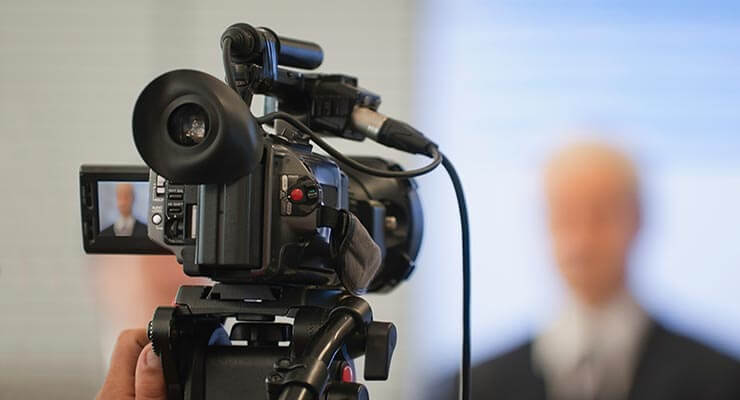Why Legal Videography Is Important for Accurate Legal Record-Keeping
In the world of legal proceedings, the accuracy of record-keeping is paramount, and legal videography emerges as a vital device in this context. By catching the nuances of verbal and non-verbal interaction, it significantly decreases the possibility for false impression that can come with typical written records. Additionally, the conservation of genuine visual evidence not only boosts the credibility of testimonies however also adds to a detailed account of events. As we explore the complex advantages of legal videography, one have to consider its implications for the future of judicial stability and openness.
Significance of Visual Evidence
Establishing the significance of aesthetic evidence in lawful proceedings is extremely important for making sure precise record-keeping and enhancing the general honesty of the judicial procedure. Visual proof acts as a critical tool in recording events, problems, and various other relevant information that may be necessary to a case. Unlike created accounts, which are susceptible to analysis and bias, visual recordings give a purpose, unalterable depiction of facts as they took place.
This kind of evidence can capture a range of components, consisting of witness habits, ecological context, and physical evidence, every one of which might influence judicial end results. By presenting a clear and thorough visual narrative, lawful videography eliminates obscurity and assists to maintain the credibility of the proof.
Moreover, aesthetic proof can be instrumental in minimizing conflicts over valid discrepancies, as it permits a direct comparison versus testimony and various other documented records. In an age where digital innovation is increasingly common, the capability to existing visual evidence effectively can substantially enhance the overall high quality of legal process. Inevitably, the incorporation of aesthetic evidence not just bolsters the paperwork process however likewise strengthens public count on in the judicial system by advertising transparency and liability.
Enhancing Statement Reliability
The combination of legal videography into court room proceedings significantly improves the trustworthiness of witness testament. By catching the nuances of verbal and non-verbal interaction, video clip recordings supply a more detailed depiction of a witness's attitude, feelings, and integrity. This visual documentation allows jurors to observe the witness's body movement, faces, and general conduct, which are vital parts that can affect their assumption of testament reputation.

Furthermore, the presence of video clip footage can discourage witnesses from providing misleading or exaggerated statements, as they are conscious that their testimony is being taped. This responsibility strengthens the honesty of the judicial procedure. Inevitably, legal videography acts as a crucial device in guaranteeing that witness testimony is not just properly portrayed yet additionally seen with enhanced trustworthiness by all parties included.
Comprehensive Document Preservation
Comprehensive record preservation is crucial for keeping the stability of legal procedures. Legal videography functions as an essential tool in this process, supplying an exact aesthetic and auditory account of testaments, depositions, and other zero hours in a case. Unlike standard written transcripts, video clip recordings catch the subtleties of body movement, tone, and feeling, which are vital for understanding the context and intent behind declarations made during legal procedures.
Incorporating audiovisual elements into record-keeping improves the preservation of proof, making sure that it continues to be undamaged and available throughout the legal procedure. This is particularly vital in cases where the integrity of witness declarations may be challenged, as visual recordings can substantiate claims and provide quality. Additionally, video records can be very useful during charms or retrials, using an unaltered representation of the initial testimony.

Furthermore, the capability to assess video clip evidence enables lawful professionals to determine essential details that may have been overlooked in written records. By preserving an extensive archive of legal procedures with videography, law practice can maintain the highest requirements of precision and accountability, eventually adding to a fairer judicial procedure.
Improving Lawful Proceedings
Enhancing legal procedures is essential for improving performance and minimizing hold-ups within the judicial system. Lawful videography acts as a pivotal tool in achieving this objective by offering clear and precise aesthetic paperwork of court hearings, depositions, and testimonies - legal videography. This innovation permits real-time recording, ensuring that all verbal and non-verbal cues are captured, which can help great site with quicker resolution of disagreements
The assimilation of videography right into lawful procedures lessens reliance on traditional approaches, such as prolonged transcripts, which can be taxing to create and examine. By having accessibility to videotaped video, lawyers can quickly redirected here reference essential moments, boosting their capability to prepare and existing cases properly. This immediacy also assists in the clearing up of testimonies, minimizing the capacity for misinterpretation.

Admissibility in Court
Exact paperwork is important not only for effectiveness however also for guaranteeing that evidence is admissible in court. Legal videography offers as an important tool in this process, supplying a dependable visual record of testimonies, declarations, and events.
To be considered permissible, lawful videography needs to comply with recognized protocols, such as proper tools usage, proper lighting, and clear audio capture. Additionally, it is vital to have actually qualified videographers who comprehend the lawful requirements bordering evidence collection. legal videography. The chain of guardianship must also be kept to avoid any insurance claims of tampering or alteration
Furthermore, lawful videography can enhance the persuasiveness of proof by supplying jurors with a direct sight of the statement, permitting an extra engaged understanding of the case. In summary, the combination of lawful videography right into record-keeping not just sustains efficiency yet additionally strengthens the stability and admissibility of proof in court proceedings.
Final Thought
To conclude, lawful videography plays a crucial role in ensuring accurate lawful record-keeping by giving unbiased visual paperwork. This approach enhances the reputation of testimonies, protects extensive records, and improves the original source lawful procedures. Furthermore, the admissibility of high-grade video clip evidence in court additional highlights its significance. Ultimately, the unification of lawful videography into the judicial procedure advertises openness and bolsters public count on the honesty of the lawful system.